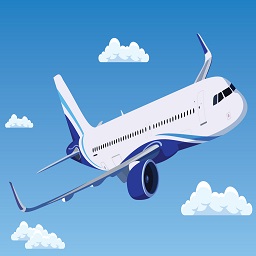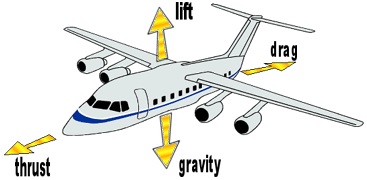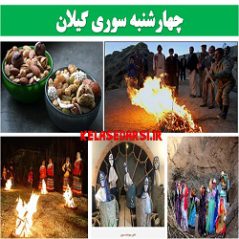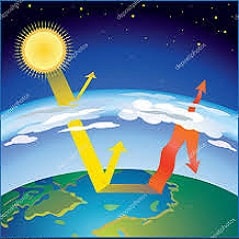متن انگلیسی درمورد هواپیما چگونه پرواز میکند ، لکچر انگلیسی در مورد هواپیما ،

An airplane
An airplane is a complex machine that is designed to fly through the air.
The principles of flight are based on the laws of physics, particularly those that govern the motion of objects through a fluid medium, such as air.
There are four main forces that act upon an airplane during flight:
lift, weight, thrust, and drag.

Lift
Lift is the force that opposes gravity and allows the airplane to stay airborne.
It is generated by the wings of the airplane, which are shaped in such a way that the air flowing over
them creates a pressure differential, with lower pressure on top and higher pressure on the bottom.
This pressure differential creates lift, which is proportional to the speed of the airplane and the size and
shape of its wings.
Weight
Weight, on the other hand, is the force that pulls the airplane downwards due to gravity.
It is determined by the mass of the airplane and acts in the opposite direction to lift.
In order for an airplane to maintain level flight, the lift force must be equal to the weight force.
Thrust
Thrust is the force that propels the airplane forward.
It is usually generated by engines, such as jet engines or propellers, which produce a high-speed exhaust or airflow.
This high-speed airflow creates a reaction force in the opposite direction, propelling the airplane forward.
The amount of thrust required depends on several factors, including the weight of the airplane, the
desired speed, and the aerodynamic characteristics of the aircraft.
Drag
Drag is the force that opposes the motion of the airplane through the air.
It is caused by the friction between the airplane and the air, as well as the shape and design of the aircraft.
There are two main types of drag: parasite drag and induced drag.
Parasite drag is caused by the non-lifting parts of the airplane, such as the fuselage, wings, and landing gear.
Induced drag, on the other hand, is caused by the production of lift and increases as the airplane’s angle of attack increases.
forces must be balanc
In order for an airplane to take off and maintain flight, all four forces must be balanced.
During takeoff, the engines produce enough thrust to overcome the drag and allow the airplane to accelerate.
As the speed increases, the wings generate enough lift to counteract the weight of the airplane, and it becomes airborne.
Once in the air, the pilot adjusts the throttle to maintain the desired speed and altitude, while also making
use of control surfaces, such as ailerons, elevators, and rudders, to control the airplane’s direction and stability.
متن انگلیسی درمورد هواپیما چگونه پرواز میکند
landing
During landing, the pilot reduces the throttle and adjusts the pitch of the airplane to decrease the lift and increase the drag.
This slows the airplane down and allows it to descend towards the runway.
As the airplane touches down, the pilot uses the control surfaces to maintain stability and bring the airplane to a stop.
In conclusion
In conclusion, the flight of an airplane is a delicate balance of forces, with lift and thrust opposing weight and drag.
By understanding and manipulating these forces, pilots are able to control the airplane and navigate through the sky.
The principles of flight have been studied and refined over many years, resulting in the safe and efficient air travel that we enjoy today.
یک هواپیما
هواپیما یک ماشین پیچیده است که برای پرواز در هوا طراحی شده است.
اصول پرواز بر اساس قوانین فیزیک است، به ویژه قوانینی که بر حرکت اجسام از طریق یک محیط سیال، مانند هوا، حاکم است.
چهار نیروی اصلی وجود دارد که در طول پرواز بر روی هواپیما عمل می کنند:
نیروی روبه بالا، وزن، رانش(نیروی رو به جلو)، و نیروی مخالف.
نیروی روبه بالا
لیفت نیرویی است که با جاذبه مخالف است و به هواپیما اجازه می دهد در هوا بماند.
این بال ها توسط بال های هواپیما ایجاد می شود که به گونه ای شکل گرفته اند که جریان هوا روی آنها اختلاف فشار ایجاد می کند که فشار کمتری در بالا و فشار بیشتر در پایین وجود دارد.
این دیفرانسیل فشار باعث ایجاد نیروی بالابری می شود که متناسب با سرعت هواپیما و اندازه و شکل بال های آن است.
وزن
از طرف دیگر وزن نیرویی است که هواپیما را در اثر گرانش به سمت پایین می کشد.
این توسط جرم هواپیما تعیین می شود و در جهت مخالف برای بلند شدن عمل می کند. برای اینکه هواپیما بتواند پرواز را در سطح خود حفظ کند، نیروی بالابر باید برابر با نیروی وزن باشد.
رانش(نیروی روبه جلو)
رانش نیرویی است که هواپیما را به جلو می راند.
معمولاً توسط موتورهایی مانند موتورهای جت یا پروانه ها تولید می شود که اگزوز یا جریان هوا با سرعت بالا تولید می کنند.
این جریان هوا با سرعت بالا نیروی واکنشی را در جهت مخالف ایجاد می کند و هواپیما را به جلو می راند.
مقدار نیروی رانش مورد نیاز به عوامل مختلفی از جمله وزن هواپیما، سرعت مورد نظر و ویژگی های آیرودینامیکی هواپیما بستگی دارد.
نیروی مخالف
درگ نیرویی است که با حرکت هواپیما در هوا مخالف است.
علت آن اصطکاک بین هواپیما و هوا و همچنین شکل و طراحی هواپیما است.
دو نوع اصلی درگ وجود دارد: کشش زاویه های و درگ القایی.
کشش زاویه ای توسط قسمت های غیر قابل بلند کردن هواپیما مانند بدنه، بال ها و چرخ فرود ایجاد می شود.
از طرف دیگر، درگ القایی ناشی از تولید بالابر است و با افزایش زاویه حمله هواپیما افزایش می یابد.
نیروها باید متعادل باشند
برای اینکه یک هواپیما بلند شود و پرواز را حفظ کند، هر چهار نیرو باید متعادل باشند.
در هنگام برخاستن، موتورها نیروی رانش کافی برای غلبه بر درگ ایجاد میکنند و به هواپیما اجازه میدهند تا شتاب بگیرد.
با افزایش سرعت، بال ها به اندازه کافی بالابر برای مقابله با وزن هواپیما ایجاد می کنند و هوابرد می شود.
هنگامی که در هوا قرار می گیرد، خلبان دریچه گاز را تنظیم می کند تا سرعت و ارتفاع مورد نظر را حفظ کند و در عین حال از سطوح کنترلی مانند ایلرون، آسانسور و سکان برای کنترل جهت و پایداری هواپیما استفاده می کند. متن انگلیسی درمورد هواپیما چگونه پرواز میکند
فرود آمدن
در هنگام فرود، خلبان دریچه گاز را کاهش می دهد و گام هواپیما را برای کاهش بالابر و افزایش درگ تنظیم می کند.
این امر سرعت هواپیما را کاهش می دهد و به آن اجازه می دهد تا به سمت باند فرود بیاید.
با فرود آمدن هواپیما، خلبان از سطوح کنترلی برای حفظ ثبات و توقف هواپیما استفاده می کند.
در نتیجه
در خاتمه، پرواز یک هواپیما، تعادل ظریف نیروها، با وزنه و کشش متضاد با نیروی بالابر و رانش است.
خلبانان با درک و دستکاری این نیروها می توانند هواپیما را کنترل کرده و در آسمان حرکت کنند.
اصول پرواز در طول سالیان متمادی مورد مطالعه و اصلاح قرار گرفته است و در نتیجه سفر هوایی ایمن و کارآمدی که امروزه ما از آن لذت می بریم، حاصل شده است.






دیدگاه کاربران ...
جهت رفع سوالات و مشکلات خود از سیستم پشتیبانی سایت استفاده نمایید .
دیدگاه ارسال شده توسط شما ، پس از تایید توسط مدیران سایت منتشر خواهد شد.
دیدگاهی که به غیر از زبان فارسی یا غیر مرتبط با مطلب باشد منتشر نخواهد شد.